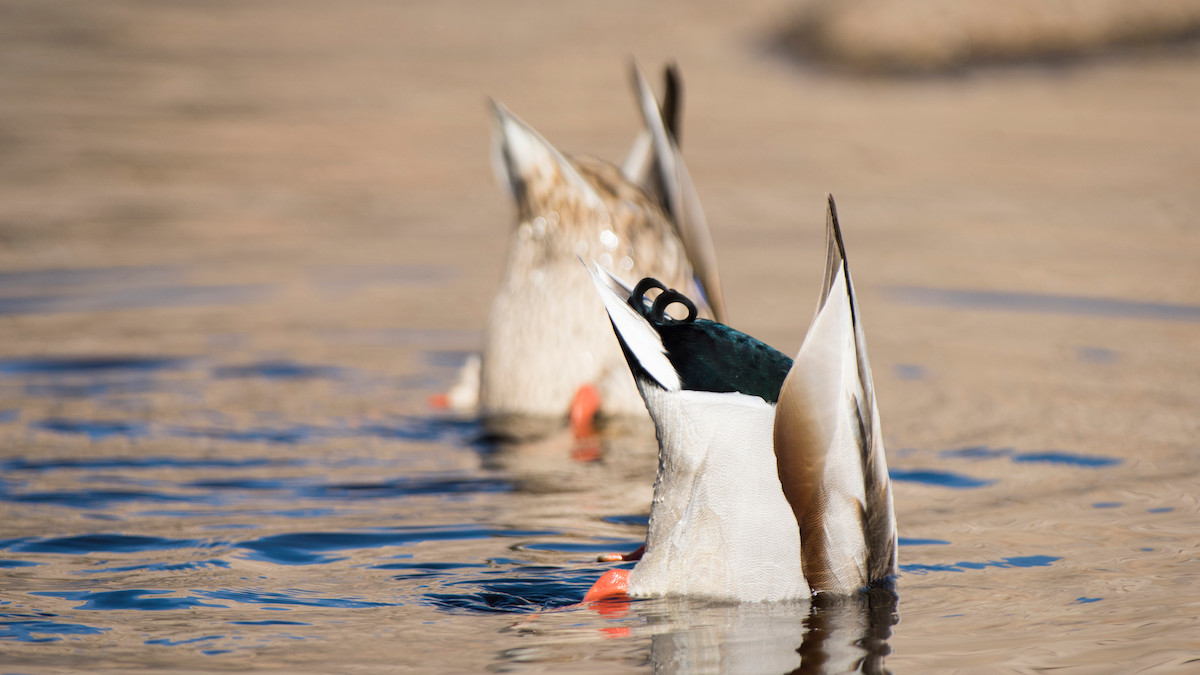
This article comes from the Bent Fishing Podcast’s “Fish News” segment, where hosts Joe Cermele and Miles Nolte go head-to-head to find and report the most interesting and amusing fishy stories across sources far and wide—from respected scientific journals to trashy tabloids.
A few years ago, our very own Spencer Neuharth dismantled the longstanding myth that fish eggs are sometimes transported on the legs of waterfowl into isolated bodies of water. But the mystery of how fish turn up in unexplainable places persists. New research from Hungary may provide some fresh insight into this phenomenon.
The study investigates endozoochory—the dispersal of an organism after passing through the gut—as the mechanism of egg transportation.
According to Ádám Lovas-Kiss, lead author of the study, “birds just love fish eggs.” He told Audubon, “if mallards find these spawning areas, they will go there and eat the eggs until they can’t move. It’s a great resource for protein for them.”
To test this means of moving fish, eight mallards were fed 500 fertilized Prussian and common carp ovaries. Their droppings were then collected and searched for viable eggs.
In total, researchers were able to recover 18 intact eggs, out of which 12 contained living embryos. The eggs were then placed in an aquarium with river water to see if they would hatch. Nine died from a fungal infection—which was also a common cause of death in the control group, so there was likely an issue with the experimental setup.
However, two Prussian carp and one common carp successfully hatched following their long journey through the inner workings of a duck.
Only .6% of the eggs survived in this experiment, which may seem like an insignificant amount. But there are around 10 million mallards in North America of breeding age, and they’re also common across Asia and Europe. It’s also worth noting that individual common carp lay about 1.5 million eggs every time they spawn, and they can spawn multiple times a year.
Assume, if you will, that 1 million mallards each feast on 1,000 fertilized carp eggs in a year. With the survival rate provided by this study, that equates to 6 million eggs surviving a journey through the birds’ digestive tracts to potential new destinations. Mallards often travel over 15 miles in a typical day. The potential for fish distribution is enormous, and this model only considers the relationship between those two species.
This is clearly a preliminary study that brings up a slew of new questions to be explored. Can all fish eggs survive the entrail escapades to a new waterbody? And what about other species of birds—are their innards as hospitable to unborn fishes?
Although waterspouts and snapping turtles may also be responsible for moving fish to inexplicable places, it appears the old yarn about ducks transporting fish eggs has some truth to it. The myth just didn’t quite have the transportation method dialed in.
To catch all the Fish News stories and so much more, listen to the full Bent show here or wherever you listen to podcasts. Don’t forget to subscribe!
Feature image via Joshua Tree National Park.







